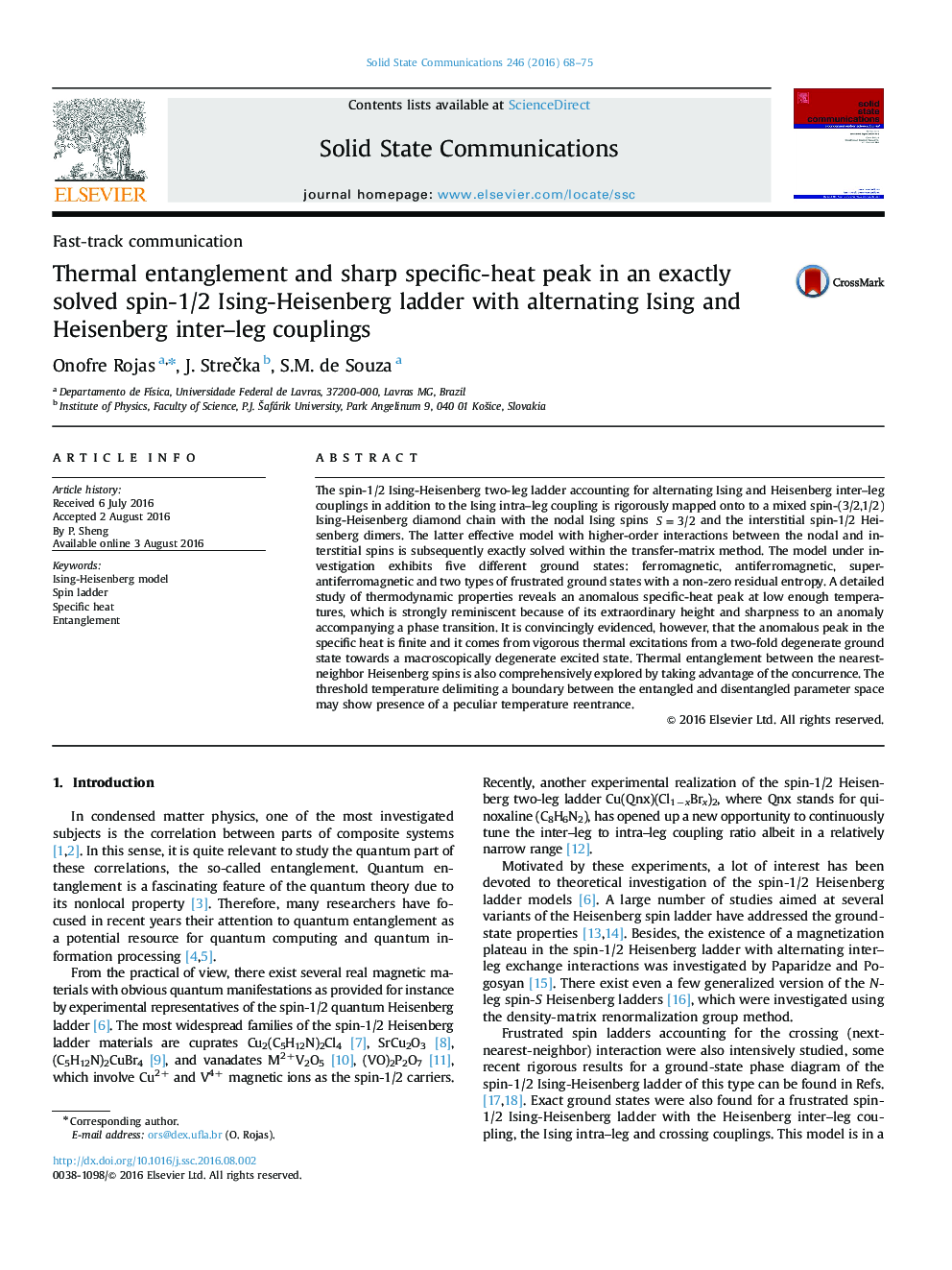| Article ID | Journal | Published Year | Pages | File Type |
|---|---|---|---|---|
| 1591042 | Solid State Communications | 2016 | 8 Pages |
•The model under investigation exhibits five different ground states: Ferromagnetic, antiferromagnetic, superantiferromagnetic and two types of frustrated ground states with a non-zero residual entropy.•A detailed study of thermodynamic properties reveals an anomalous specific-heat peak at low enough temperatures, which is strongly reminiscent because of its extraordinary height and sharpness to an anomaly accompanying a phase transition.•It is convincingly evidenced, the anomalous peak in the specific heat is finite and it comes from vigorous thermal excitations from a two-fold degenerate ground state towards a macroscopically degenerate excited state.
The spin-1/2 Ising-Heisenberg two-leg ladder accounting for alternating Ising and Heisenberg inter–leg couplings in addition to the Ising intra–leg coupling is rigorously mapped onto to a mixed spin-(3/2,1/2) Ising-Heisenberg diamond chain with the nodal Ising spins S=3/2S=3/2 and the interstitial spin-1/2 Heisenberg dimers. The latter effective model with higher-order interactions between the nodal and interstitial spins is subsequently exactly solved within the transfer-matrix method. The model under investigation exhibits five different ground states: ferromagnetic, antiferromagnetic, superantiferromagnetic and two types of frustrated ground states with a non-zero residual entropy. A detailed study of thermodynamic properties reveals an anomalous specific-heat peak at low enough temperatures, which is strongly reminiscent because of its extraordinary height and sharpness to an anomaly accompanying a phase transition. It is convincingly evidenced, however, that the anomalous peak in the specific heat is finite and it comes from vigorous thermal excitations from a two-fold degenerate ground state towards a macroscopically degenerate excited state. Thermal entanglement between the nearest-neighbor Heisenberg spins is also comprehensively explored by taking advantage of the concurrence. The threshold temperature delimiting a boundary between the entangled and disentangled parameter space may show presence of a peculiar temperature reentrance.
